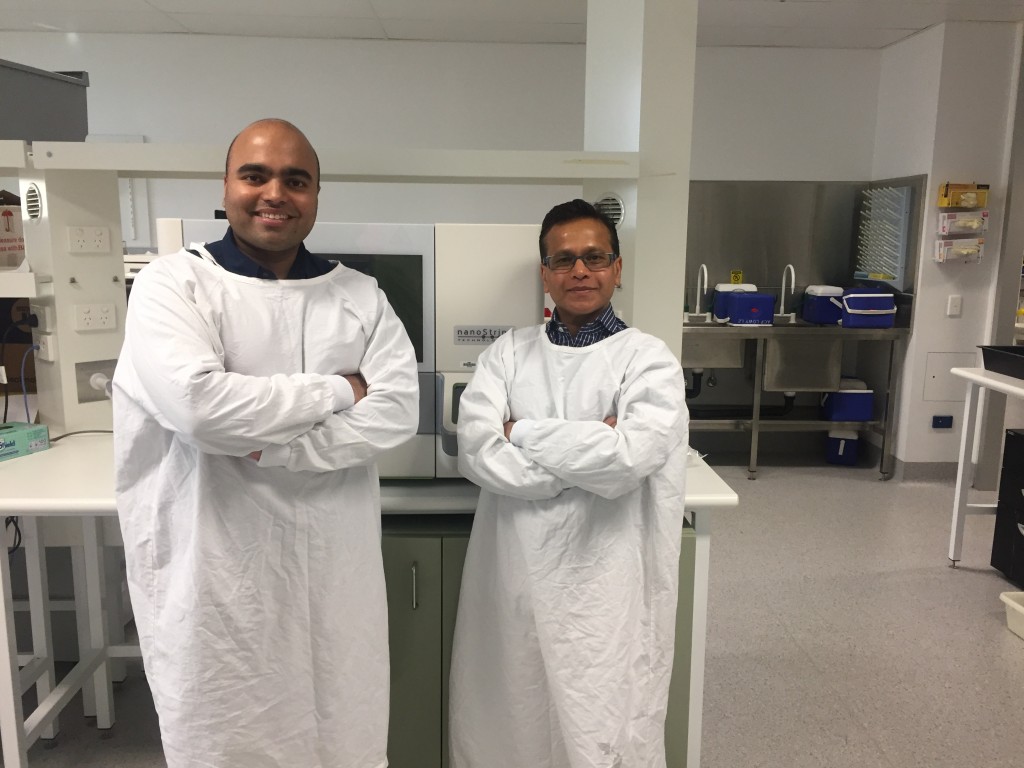Researchers have identified that cell cycle quiescence in haematopoietic progenitor cells underpins primary resistance to azacitidine in patients with myelodysplastic syndrome.
The knowledge could help identify a method of determining non-responders earlier than the current ‘wait and see’ approach which results in some patients receiving futile treatment for four to six months.
The research also suggested a combination of therapies that may improve the rate of response and reduce the proportion of patients with myelodysplastic syndrome whose disease transforms into acute leukaemia.
Professor John Pimanda, head of the Adult Cancer Program, at the University of NSW’s Lowy Cancer Research Centre, shared some insights with the limbic.

Dr Ashwin Unnikrishnan and Professor John Pimanda from the UNSW
Can you explain the cell cycle quiescence that is associated with initial resistance to azacitidine and how this knowledge could be used to predict patient response?
Azacitidine is incorporated into DNA of dividing cells and its uptake is lower in quiescent haematopoietic progenitors.
Patients who went on to respond to azacitidine had a significantly greater fraction of progenitors in cell cycle than those who failed to respond.
Importantly, these differences were present even before they commenced azacitidine treatment. Cell cycle properties in haematopoietic progenitors can be measured using flow cytometry, a routine tool used in diagnostic laboratories in hospitals.
The research also found a possible way to mediate cell cycle quiescence. Do you see a way forward to a better treatment for these patients soon?
Dr Ashwin Unnikrishnan, the first author of this manuscript showed that a member of the integrin alpha family of proteins, ITGA5 was highly expressed in haematopoietic progenitors of non-responders.
The ability of these azacitidine resistant progenitors to form blood colonies improved when azacitidine was combined with an inhibitor of ITGA5, which interferes with integrin mediated interactions between haemtopoietic progenitors and stromal cells.
These proof of principle studies have paved the way for current investigations aimed at identifying the optimal combination that yields healthy blood cells. The outcome of these experiments will form the basis for trialling drug combinations in patients.
Even those patients who initially respond to azacitidine are at later risk of relapse. How does this resistance to treatment develop?
Haematopoietic progenitors reside in the bone marrow space where they mature to form circulating blood cells. Our view is that the more proliferative progenitors in MDS carry a higher mutation burden and crowd out the bone marrow.
These cells are more likely to take-up azacitidine and be cleared during initial treatment. The progenitors with a lower mutation burden are more likely to form mature blood cells rather than proliferate.
Hence, they survive and expand by virtue of being less likely to take up azacitidine and produce circulating blood cells – i.e. a clinical response.
However, as shown by Dr Unnikrishnan, the cells that survive and make blood are not healthy progenitors but are those with early baseline mutations.
Unfortunately, these cells are prone to acquire mutations that evade on-going therapy and eventually transform into acute leukaemia.